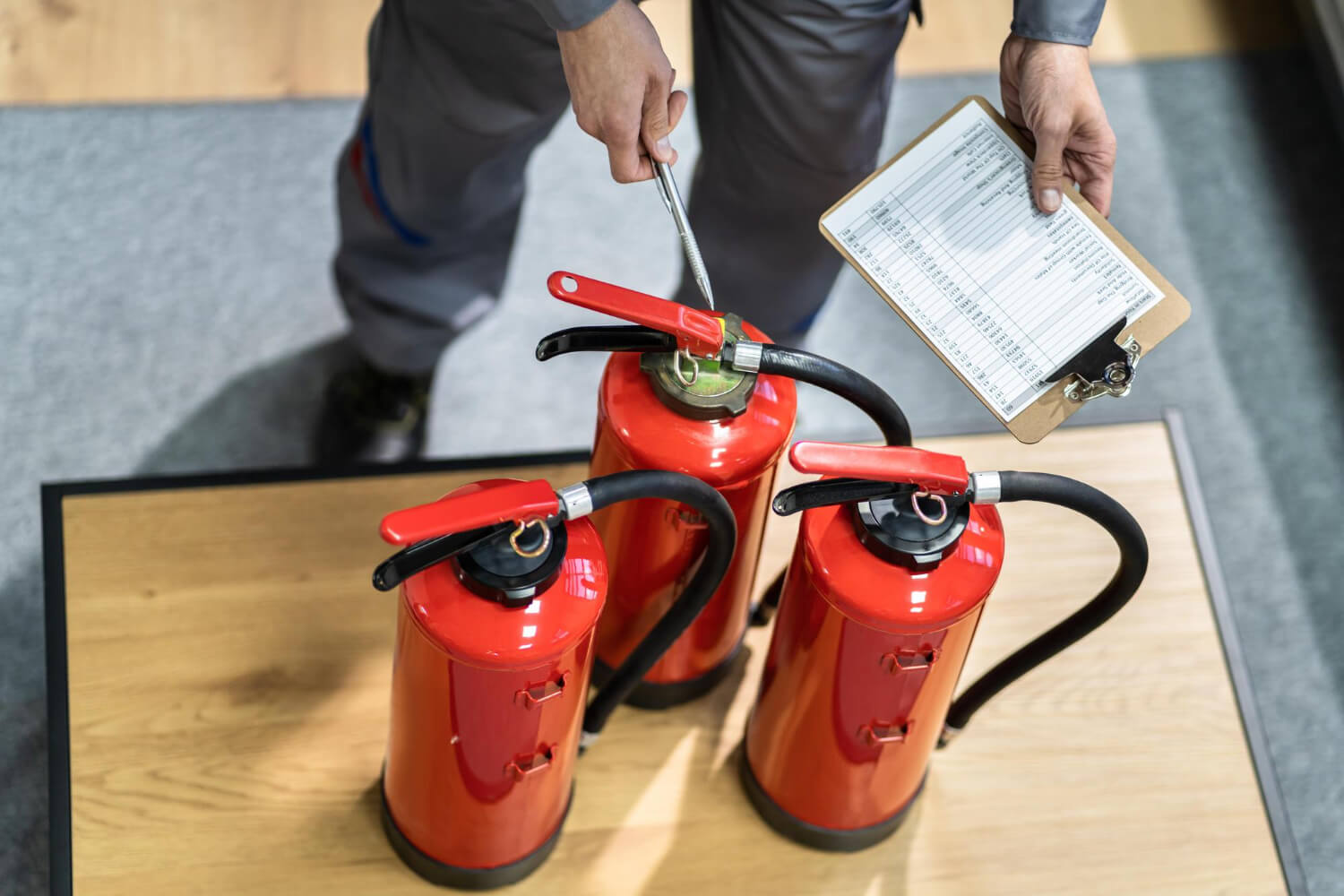While some workplaces carry a higher fire risk than others (like those in the construction, manufacturing, or mining sectors), the truth is that a fire can start in almost any work environment. That’s the bad news. The good news is that the vast majority of workplace fires can be prevented through fire safety awareness, proactive fire prevention programmes, and staff training.
In this article, we’ll look at the most common causes of fires in the workplace and provide guidance on how they can be prevented.
1. Unsafe electrical installations and faulty electronic equipment
Non-compliant wiring, damaged cords, overloaded multiplugs, and old or defective electronic equipment are common causes of electrical fires in the workplace.
Prevention:
Regularly inspect electronic equipment and machinery for damage, defects, and wear-and-tear. Ensure that your building’s electrical certificate of compliance is valid and always use qualified electricians for any electrical work.
2. Flammable and combustible materials
The presence of flammable substances on site is an extreme fire hazard, as these substances can result in large, explosive, fast-moving fires.
Prevention:
The appropriate storage, handling, and disposal protocols must be followed to control fire risks associated with flammable substances. Managers must ensure that employees follow these protocols at all times and adhere to fire prevention rules. In addition, businesses dealing with flammable and combustible materials are advised to send team members for Advanced Firefighting training to equip them with the skills to control and supress larger, fast-moving fires.
3. Human error
Human error plays a large role in many workplace incidents and accidents, including fires. Common examples of mistakes that cause fires at work include spilling flammable liquids onto electrical equipment, smoking in unauthorised locations, and leaving heaters on overnight.
Prevention:
Regular fire safety awareness campaigns, staff training, proactive fire prevention programmes, and fire safety signage can assist with keeping fire safety front of mind and preventing many workplace fires caused by human error.
4. Negligence
Negligence differs from human error in that negligence relates to instances when employees fail to abide by the proper fire prevention protocols implemented in the workplace. Examples include incorrect stacking techniques and covering electrical equipment that requires airflow.
Prevention:
Implementing staff training, toolbox talks, and strictly enforcing fire safety policies can prevent fire incidents.
5. Arson
Unfortunately, arson is another common cause of workplace fires. Whether it is an upset employee starting a fire inside the workplace or a result of a civil disturbance happening outside the building, any business could be vulnerable to arson.
Prevention:
Arson protection measures take the form of deterrents and early detection systems, and could include 24-hour manned security, CCTV cameras, secure perimeter fencing, smoke detectors, and sprinkler systems.
6. Unsafe cooking practices
Unsafe cooking practices are a major cause of fires in both home and office kitchens. Common causes of kitchen fires include leaving the stove on unattended, hot oil or grease igniting, food catching alight while being reheated in the microwave, and kitchen utensils, paper towels, and dishcloths catching fire.
Prevention:
Staff awareness training regarding safe cooking practices is important. Keep kitchen areas neat and clutter-free and keep a fire extinguisher and fire blanket (an effective tool for smothering grease pan fires) in close proximity to the office kitchen.
7. Cigarettes and smoking
Smoking in unauthorised locations is one of the primary causes of fires in workplaces, homes, and public spaces. According to South African law, smoking may only take place in designated smoking areas that are free of fire hazards and where ashtrays are supplied.
Prevention:
Strict enforcement of smoking rules and creating dedicated workplace smoking areas outside is the best way to prevent workplace fires caused by cigarettes.
8. Poor housekeeping
Cluttered, over-crowded storerooms and passageways can result in a concentration of flammable materials (cardboard boxes, paper, litter, etc.) that pose a fire risk. In addition, obstructed passageways prevent people from evacuating a building safely in the event of a fire or other emergency.
Prevention:
Good housekeeping is a vitally important aspect of workplace fire prevention. Keep storerooms, work areas, and passageways neat and free of litter. Shelves must be stacked in accordance with safe stackingregulations. Hazardous and flammable materials must be labelled and stored as per the appropriate protocols. Any mess or spills must be promptly cleaned up.
Firefighting training is an important aspect of fire safety in the workplace
Firefighting courses give delegates the theoretical knowledge and hands-on practice needed to conduct fire risk assessments and assist with the implementation of fire prevention programmes, significantly lowering the risk of a fire starting in the workplace.
In addition, firefighting training includes modules on the theory of fire, fire detection methods, firefighting equipment, safe evacuation procedures, and fire investigation and scene preservation. During the practical component of the course, students learn the proper technique for extinguishing a fire, by using an actual fire extinguisher to extinguish a real fire.
Absolute Health Services’ fully accredited one-day Firefighting course is suitable for most offices, workplaces, and industries. For businesses with a higher fire load (for example, big warehouses, factories, and fuel depots) or those Fire Wardens wishing to upskill, our two-day Advanced Firefighting course is highly recommended.




